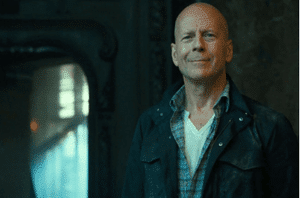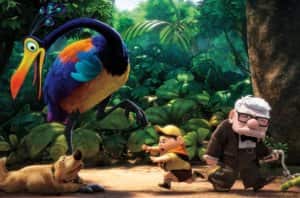
Film making is the most modern and all-encompassing form of storytelling. Films with all their magic of production design, VFX, animation are able to transport the viewer into magic realms, far flung galaxies, mythical words, and across the globe. At the heart of these amazing visual feats lies a good story written on paper; and at the heart of a good story are its characters. If you’re able to understand and master this during your time in Film School, you will go a long way to being able to create lasting and touching films.
At the most basic level, every story is about a character that undergoes change. There are variations of this; the change is often positive, whereby through a series of events the protagonist has become a better person with a higher level of understanding or achievement; the change can be negative, whereby the protagonist’s personal or external flaws are too difficult to overcome and he fails, usually leading the audience to have the moment of self-revelation that is intended for the protagonist. This is called a Character Arc and is the first step in building a character.The essence of an character is revealed through his actions, not his dialogues.
Every story is pushed forward by a protagonist’s desire. He has a want – something that he wants to achieve, i.e. save the world, win the championship, get revenge, or simply live an easy life. To achieve his want he must go through a series of difficulties, whereby conflict is introduced, and he may or may not achieve his want. Every protagonist also has a need that they may not be aware of and can be actively against; this stems from a psychological or moral weakness. Hence, one of the most interesting spheres to explore while developing a character is its psychology.
In Die Hard John McClane wants to stop the terrorists, but needs to reconcile with his estranged wife. In Pixar’s Up the grumpy old man wants to fly his house to Paradise Falls and live his life in peace, and in doing so is forced to open up emotionally to the young Russell, therefore, overcoming his weakness of being isolated and lonely after the death of his wife.

Die Hard

Pixar’s “Up”
A character’s backstory can inform these facets, and can be used as a good tool to reveal to the audience why the protagonist has a particular want or has a particular weakness. Once you’ve established what your protagonist’s wants and needs are, and his moral or psychological weakness, you are able to work out his desire which should inform every decision he makes over the course of the film. Conflict is then introduced to prevent the protagonist achieving his wants and forcing him to confront his needs. Conflict can come from a central opponent or villain, a series of escalating challenges, or both.
Every scene in a film needs to have a conflict of some sort. It doesn’t need to be an action packed fight scene, but some conflict needs to take place- and it can be as simple as a character stuck in traffic. His desire is to get to work on time, and the conflict comes from the traffic preventing him to do so. Interestingly in a romance or a romantic sub-plot, the conflict comes from a girl who the protagonist is trying to win over – she is the so-called opponent, the villain- that he must overcome through a series of romantic gestures of understanding to win her over. Villains or central opponents often have their own wants and needs, which are directly conflicting the protagonists. This dramatic structure requires that the main conflict in your protagonist’s journey must arise from external factors.
Building a character is the beginning of telling a good story. Once you’ve worked out these key points you can start looking at story structure, side characters and their different purposes, subplots, motifs and create an organic and impactful film.
These very basic facets of character are true whether the film is 1 minute long or a 10 season TV-series. It’s true for any genre, from action packed Michael Bay films, to a slow brooding art house picture with complex and intersecting characters and storylines such as Tom Ford’s Nocturnal Animals or Tarantino’s Pulp Fiction. Rules are made to be broken, but by understanding how and why these elementary rules create an impactful story gives you the capabilities to experiment and create more complex and subtle stories.
These considerations just skim the surface on the importance of character in creating stories. I highly recommend reading The Anatomy of a Story: 22 Steps of Becoming a Master Storyteller written by John Truby, and The Writer’s Journey: Mythic Structure for Writers written by Christopher Vogler. Both are riveting and insightful breakdowns of tested techniques used to construct stories dating back to the Greek tragedies of Oedipus all the way to modern classics such as Star Wars and Titanic. They’re a must read for students studying at a Film Academy!





